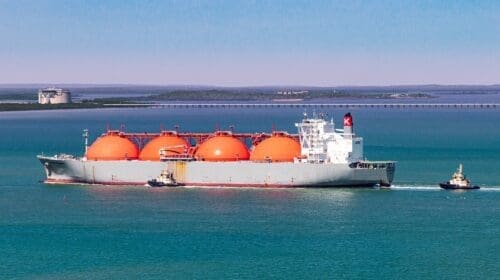Oil and gas activity in Texas increased for the sixth consecutive month in May, increasing 5.7 percent over a year ago, according to the latest Texas Petro Index (TPI) released today.
All leading TPI indicators registered year-over-year gains in May, with the rig count and well-permitting activity both notching sharp increases. The TPI increased 9.1 points from 159.8 in May 2016 to 168.9 in May 2017, and it increased 4.1 points over April’s TPI of 164.8.
Even though activity rose through May, crude oil prices on the New York Mercantile Exchange for 30-day delivery declined 7 percent from $48.26 on June 1 to $44.89 on June 30, indicating that activity may slow, too.
“The industry is clearly in better shape than it was a year ago,” said Karr Ingham, the economist who created the TPI and updates it monthly. “However, crude oil price sentiments have turned from bullish to bearish in recent weeks as production growth in the U.S.—particularly in Texas— continues to frustrate efforts by OPEC and others to withhold supplies from global oil markets to better balance supply and demand.
“Oil prices have declined from the high points earlier in the year despite commitments by major foreign oil producers to extend production cuts into 2018,” Ingham said. “Oil markets reflect participants’ sense that sufficient volumes of crude oil are on hand in terms of both production and crude oil in storage.
“Simply put, upstream activity in Texas is going to plateau at some point, absent a meaningful increase in crude oil prices, and that increase simply has not materialized. Growth in the rig count has now stalled as a result.”
A composite index based on a comprehensive group of upstream economic indicators, the Texas Petro Index in May was 168.9, up from 164.8 in April and 5.7 percent higher than May 2016, when the TPI stood at 159.8. Before the recent economic downturn, the TPI peaked at a record 313.5 in November 2014, which marked the zenith of an economic expansion that began in December 2009, when the TPI stood at 187.4.
TPI Highlights in May:
- Estimated crude oil production in Texas totaled 103.4 million barrels, 4.4 percent more than in May 2016. With oil prices in May averaging $45.06/bbl, the value of Texas-produced crude oil amounted to $4.7 billion, 8.5 percent more than in May 2016.
- Texas natural gas output was 675.7 billion cubic feet, a year-over-year decline of about 3.7 percent. With natural gas prices in May averaging $3.04/Mcf, the value of Texas-produced gas increased 62.4 percent to more than $2.0 billion.
- The Baker Hughes count of active drilling rigs in Texas averaged 453 units, 148.9 percent more units than in May 2016 when an average of 182 rigs were working. Drilling activity in Texas peaked in September 2008 at a monthly average of 946 rigs before falling to a trough of 329 in June 2009. In the economic expansion that began in December 2009, the statewide average monthly rig count peaked at 932 in May 2012 and June 2012.
- The number of original drilling permits issued was 1,021, 68.5 percent more than the 606 permits issued in May 2016.
- An estimated average of 207,850 Texans remained on upstream oil and gas industry payrolls, 6.5 percent more than in May 2016, but 32 percent fewer than the estimated high of 306,020 in December 2014.
About the TPI: The Texas Petro Index is a service of the Texas Alliance of Energy Producers, the nation’s largest state association of independent oil and gas producers.
For additional information, please contact:
- Karr Ingham at 806-373-4814 (office) or 806-433-5309 (mobile), or karr@inghamecon.com.
- Alex Mills, president of the Texas Alliance of Energy Producers, at 800-299-2998 (office – toll free) or 940-781-0350 (mobile), or alexm@texasalliance.org; or
- A. D. Koen, Texas Alliance public relations specialist, at 713-812-1623 (office), or adkoen@comcast.net.
Alex Mills is the former President of the Texas Alliance of Energy Producers. The Alliance is the largest state oil and gas associations in the nation with more than 3,000 members in 305 cities and 28 states.
Oil and gas operations are commonly found in remote locations far from company headquarters. Now, it's possible to monitor pump operations, collate and analyze seismic data, and track employees around the world from almost anywhere. Whether employees are in the office or in the field, the internet and related applications enable a greater multidirectional flow of information – and control – than ever before.









